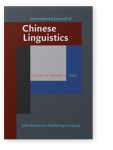Vol. 10:2 (2023) ► pp.220–283
Problems with universal metrics
Evidence from Chinese recent-style verse (jinti shi) and Japanese haiku
This paper aims to examine the problem of universal metrics developed with English sonnets by analyzing meter in Japanese haiku and Chinese recent-style verse. [1] 1 Following Martin (2007), In this study, a haiku is defined as a traditional form of Japanese poetry consisting of three lines, typically with seventeen metrical units per verse arranged in a pattern of five, seven, and five units per line. The data reveals that a system with metrical prominence cannot be applied to Chinese and Japanese metrical verse since linguistic prominence is missing in both languages. The only common feature shared among the metrical systems of the three languages is the existence of a contrast between two types of syllables that belong to opposite classes. However, this contrast only applies in limited situations in the Japanese case. Lastly, instead of a universal metrical structure, the data suggests that the metrical structure in the three languages should be distinguished.
Article outline
- 1.Background: Generative metrics and English iambic verse
- 2.The aim of this paper
- 3.Methodology and data
- 3.1Methodology
- 3.2Data description
- 4.Case studies
- 4.1Chinese recent-style verse
- 4.1.1The structure and canonical patterns
- 4.1.2Metrical structures from the data
- 4.1.3Tonal distribution per position
- 4.1.4The pair-wise contrast and 1-3-5 rule
- 4.1.5Tonal patterns
- 4.2Japanese haiku
- 4.2.1Controversy on the poetic unit: Syllable vs. mora
- 4.2.2Poetic unit and irregular patterns from the data
- 4.2.3Syllable structure and distribution of special Moras from the data
- 4.1Chinese recent-style verse
- 5.Discussion and theoretical implication
- 5.1Comparison between Chinese recent-style verse and English iambic verse
- 5.2Comparison between Japanese haiku and English iambic verse
- 5.3Theoretical implication
- 5.3.1On the metrical pattern of Chinese-recent style
- 5.3.2On Japanese metrical pattern
- 5.3.3Metrical structure in the three languages
- 6.Conclusion
- Acknowledgments
- Notes
-
References
